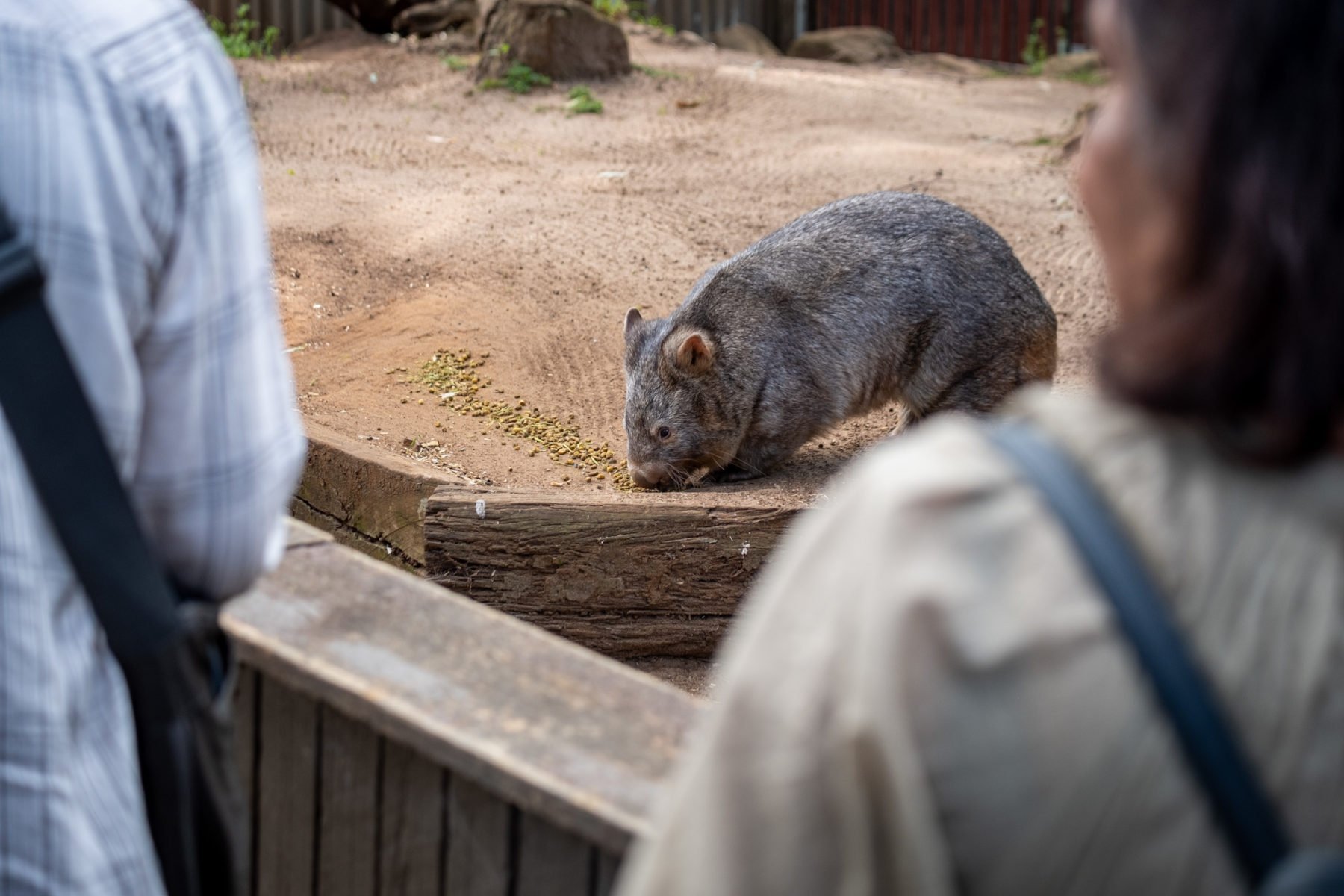Inside a wombat dentist appointment

Meet Manda, a bare-nosed wombat who, as of late, has gone a little too hard on naughty food, skipping the ‘boring salad stuff’ and landing herself at the veterinary clinic for a dental check-up.
Manda, who was taken into care early in life after her mother was the victim of a road collision, was deemed unfit for release into the wild and now lives at the Byron Bay Animal Sanctuary. For captive wombats such as Manda, issues with their teeth can sometimes emerge. This is because wombat teeth actually don’t stop growing.
Yep, you heard that correctly. And they rely on certain foods to keep the size of their teeth in check. “In the wild they chew on pieces of bark, logs and fibrous plants and their teeth would wear down at an even rate,” says Byron Bay Wildlife Hospital veterinarian Bree Talbot, who conducted Manda’s health check.
“Sometimes in care, it’s really hard to replicate their natural diet 100 per cent. There are also different personalities and some of the wombats don’t want to eat their good food. Instead they want to be naughty and eat the treats (less fibrous food).”

It may look like wombats only have those prominent four teeth at the front of their mouths. In fact, they have 24 teeth all up. During Manda’s routine health check, Bree quickly noticed that her molars were growing in odd directions and had begun to pierce her cheeks. While diet is a big factor, Bree also suspects that Manda isn’t chewing her food properly.
Fixing Manda’s dental problems is no easy feat. According to Bree, because wombat mouths only open between 30–40 degrees, it’s extremely difficult to just remove the teeth and could take several hours. This means the vets instead have to “burr the teeth down” to a normal shape. ”We do this using special drill bits and hopefully this process will give Manda some pain relief by stopping the teeth from poking into her cheeks.”

After this procedure is completed, the focus will be on keeping Manda away from naughty food, Bree says. ”We’ll try to get her to eat more fibrous food and make sure that she chews normally, but she’ll probably require more regular dentals if she doesn’t want to eat her good food.”
For Bree, working with wombats such as Manda is a highlight of her job at the wildlife hospital. “It never gets old. Working with this species can be challenging. They can be stubborn and when they want they can be dangerous because they can charge at you and bite, so it’s always a little bit of fun, you never know what’s going to happen.”





